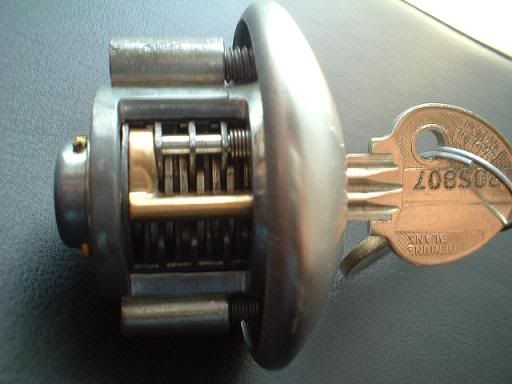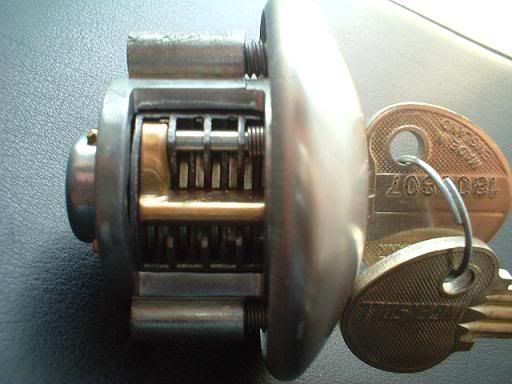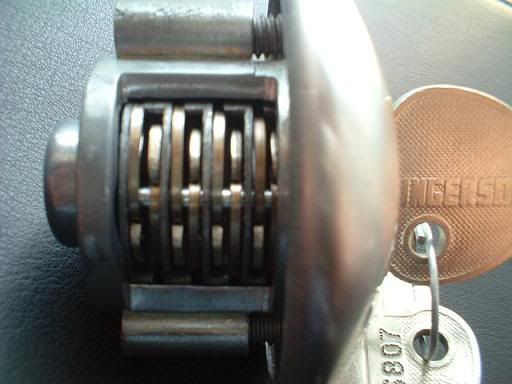The Ingersoll mechanism uses 10 levers, and a flat key. All the gates on the levers must be aligned to the sidebar, allowing it to sink in, and the plug turn.
There is a breakdown on this thread: http://www.lockpicking101.com/viewtopic.php?p=121250#121250
This is a really nice lock, and it's just really nicely designed - beautiful really. This proves the Brits really can make some awesome stuff.
The cut-away took me about a day to do, and was very straight forwards. I cut the sidebar so you could see the lower area of the levers and watch the gates align, but I would not advise anybody to really do this - the spring resting against the sidebar won't work and will need to be bent to shape.
It's an easy cut-away to make, but at the price these locks sell at, you don't wanna mess up - take it slow, think twice, cut once.
Here are the keys, you can see they resemble a double wafer key to some extent. There are 5 cuts on each side (Shocker lol!) but on one side 3 cuts are at the same height.

Here is the cylinder with the side cut-away... The brass part is the sidebar, and the silver parts are obviously the levers.

We can see that the key has lifted and lowered some of the levers in this photo.

The key has been fully inserted, and the sidebar has sunk into the gates on the levers. Usualy the sidebar only sinks in when you turn it, but the spring collapsed during this photo and the sidebar just sunk in without needing to turn. I fixed the issue with the spring since.

Here the plug has been turned 180 degrees so the back of the levers, and springs can be seen.

Well... That pretty much covers the Ingersoll lock, and it's mechanism.
I hope you got something from this...
Thanks for reading,
Ben





